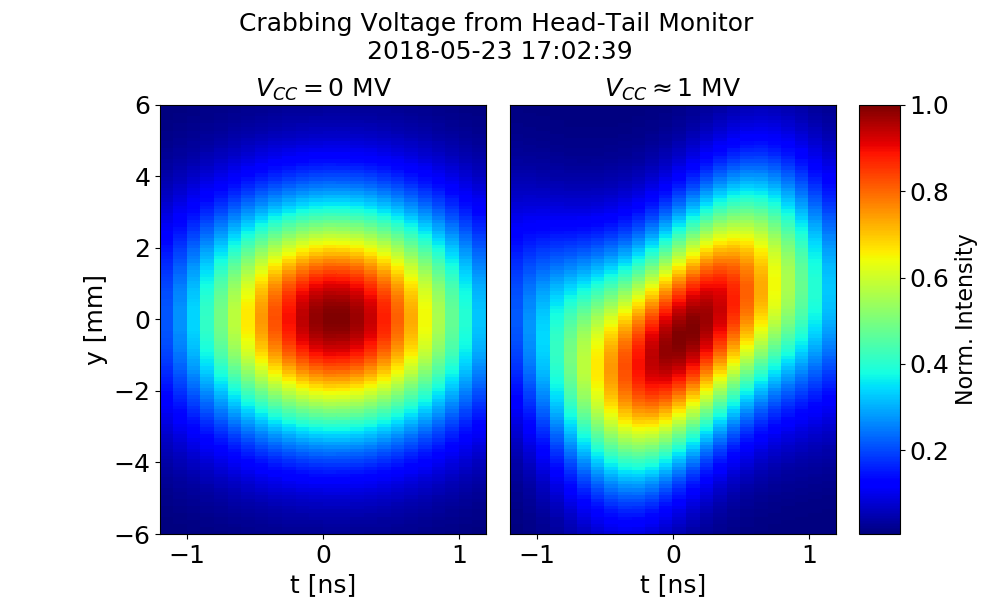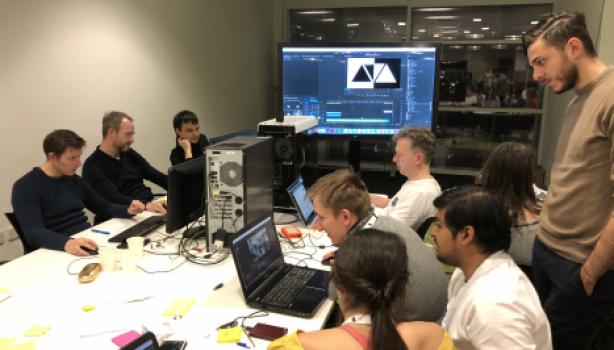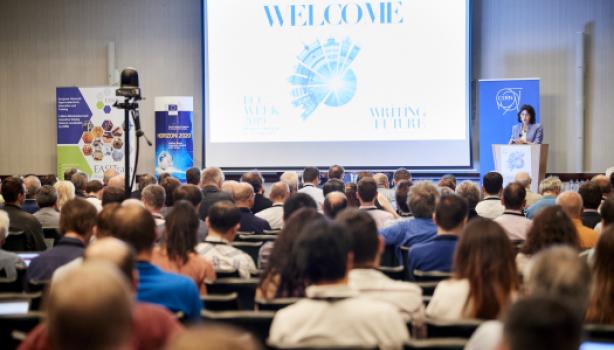The first test of superconducting crab cavities to rotate a beam of protons was performed on 23 May using a beam from CERN’s Super Proton Synchrotron (SPS) accelerator. These cavities are a key component of the High-Luminosity Large Hadron Collider (HL-LHC). A total of 16 such cavities will be installed in the HL-LHC – eight near ATLAS and eight near CMS.

Figure 1: DQW Crab Cavity Prototype being assembled at CERN.
In the LHC and HL-LHC, the two counter-rotating bunches collide at an angle at each collision point of the experiments. When installed at each side of the ATLAS and CMS experiments, the crab cavities will “tilt” bunches of protons in each beam to maximise their overlap at the collision point thus increasing the luminosity. The crab cavities are expected to increase the overall luminosity by 15 to 20% and improve the quality of data collected by the experiments. Crab cavities were already used in the KEKB collider in Japan for electrons and positrons, but never with protons, which are more massive and at significantly higher energies.

Figure 2: The Crab Cavity Cryostat installed on a movable table in the CERN SPS.
The first crab cavity prototypes were manufactured at CERN in 2017 in collaboration with STFC and USLARP. The cavities were assembled in a cryostat and tested at CERN-SM18 facility prior to its installation into the SPS. The cavities were installed in the SPS accelerator during the last winter technical stop for machine development studies in the SPS.

Figure 3: Images a bunch in the CERN SPS for 2 different voltage settings in the Crab Cavities. Left without voltage and deflection. Right with 1MV voltage and deflection.
The first beam tests were performed on 23 May at 4.5 K with a single proton bunch accelerated to 26 GeV and with a bunch intensity of 0.2-1×1011 p/b. The crab cavities were powered to about 10% of their nominal voltage in the first tests and later increased to up to 50% limited mainly due to vacuum rise. The “crabbing” was observed using head-tail monitor with large enough bandwidth and resolution to observe the intra-bunch orbit induced by the crab cavities. These tests mark the start-up of a unique facility for testing superconducting cavities on a high-current, high-energy proton beam. The results mark an important milestone to prove the feasibility of using such cavities with long proton bunches for increasing the luminosity in the HL-LHC.
In the coming months, the cavities will be commissioned to their nominal temperature of 2K and slowly ramp the kick voltage to their nominal voltage of 3.4 MV. During the rest of the year, the cavities will undergo a series of tests to fully validate their operation for a robust operation in the HL-LHC era.





